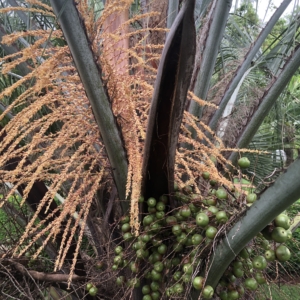Country Of Origin
Brazil
![O:31:"craft\elements\db\CategoryQuery":84:{s:27:"�yii\base\Component�_events";a:0:{}s:35:"�yii\base\Component�_eventWildcards";a:0:{}s:30:"�yii\base\Component�_behaviors";a:1:{s:12:"customFields";O:35:"craft\behaviors\CustomFieldBehavior":144:{s:5:"owner";r:1;s:34:"�yii\base\Behavior�_attachedEvents";a:0:{}s:10:"hasMethods";b:1;s:16:"canSetProperties";b:1;s:8:"address1";N;s:8:"address2";N;s:4:"city";N;s:5:"state";N;s:3:"zip";N;s:7:"country";N;s:11:"climateZone";N;s:6:"czZone";N;s:6:"czCity";N;s:10:"czProvince";N;s:9:"firstName";N;s:8:"lastName";N;s:5:"email";N;s:8:"password";N;s:12:"emailAddress";N;s:6:"photos";N;s:10:"photoSize1";N;s:14:"photoLocation1";N;s:14:"photoPlanting1";N;s:6:"photo3";N;s:6:"photo4";N;s:6:"photo5";N;s:14:"photoLocation2";N;s:14:"photoLocation3";N;s:14:"photoLocation4";N;s:14:"photoLocation5";N;s:10:"photoSize2";N;s:10:"photoSize3";N;s:10:"photoSize4";N;s:10:"photoSize5";N;s:14:"photoPlanting2";N;s:14:"photoPlanting3";N;s:14:"photoPlanting4";N;s:14:"photoPlanting5";N;s:10:"photoGroup";N;s:5:"photo";N;s:4:"size";N;s:8:"location";N;s:14:"typeOfPlanting";N;s:5:"agree";N;s:4:"body";N;s:10:"commonName";N;s:4:"zone";N;s:7:"minTemp";N;s:7:"zoneAlt";N;s:10:"growthRate";N;s:17:"lightRequirements";N;s:5:"habit";N;s:8:"heightFt";N;s:7:"heightM";N;s:9:"soilPhMin";N;s:9:"soilPhMax";N;s:8:"priority";N;s:5:"seeds";N;s:8:"seedling";N;s:8:"fourInch";N;s:9:"oneGallon";N;s:11:"threeGallon";N;s:13:"photoSpecies1";N;s:13:"photoSpecies2";N;s:13:"photoSpecies3";N;s:13:"photoSpecies4";N;s:13:"photoSpecies5";N;s:12:"abbreviation";N;s:15:"metaDescription";N;s:13:"metaPageTitle";N;s:11:"socialImage";N;s:19:"descriptionFallback";N;s:17:"globalSocialImage";N;s:13:"titleFallback";N;s:16:"pollAnswerMatrix";N;s:5:"label";N;s:12:"selectedPoll";N;s:5:"image";N;s:10:"recentPoll";N;s:10:"userPhotos";N;s:5:"sizeX";N;s:10:"imageTitle";N;s:21:"inPersonalCollectionX";N;s:9:"locationX";N;s:8:"speciesX";N;s:9:"photoDump";N;s:7:"species";N;s:19:"inPrivateCollection";N;s:15:"typeOfPlantingX";N;s:20:"formerScientificName";N;s:11:"headingList";N;s:4:"text";N;s:7:"heading";N;s:8:"careTips";N;s:8:"mapImage";N;s:13:"speciesPhotos";N;s:4:"user";N;s:20:"inPersonalCollection";N;s:11:"speciesPage";N;s:11:"assignments";N;s:16:"leafTypeDropdown";N;s:23:"countryOfOriginCategory";N;s:10:"linkTarget";N;s:11:"buttonLabel";N;s:12:"externalLink";N;s:12:"internalLink";N;s:9:"inHabitat";N;s:21:"skipPhotoFieldsDetail";N;s:20:"skipPhotoFieldsLabel";N;s:20:"recentSpeciesUpdates";N;s:14:"twitterProfile";N;s:16:"instagramProfile";N;s:15:"linkedinProfile";N;s:15:"facebookProfile";N;s:10:"crownshaft";N;s:14:"threadsProfile";N;s:16:"temperatureRange";N;s:9:"zoneTitle";N;s:15:"newsDescription";N;s:12:"newsImageUrl";N;s:8:"newsLink";N;s:10:"newsSource";N;s:28:"conservationScaleDescription";N;s:28:"conservationScaleStatusColor";N;s:17:"conservationScale";N;s:19:"userFacebookProfile";N;s:20:"userInstagramProfile";N;s:18:"userThreadsProfile";N;s:14:"imagePositionX";N;s:16:"shortDescription";N;s:11:"buttonTitle";N;s:14:"imagePositionY";N;s:6:"newTab";N;s:7:"linkUrl";N;s:10:"hideAuthor";N;s:11:"linkEntries";N;s:14:"authorOverride";N;s:8:"category";N;s:13:"contentBlocks";N;s:12:"callToAction";N;s:12:"calloutTitle";N;s:8:"embedUrl";N;s:6:"images";N;s:55:"�craft\behaviors\CustomFieldBehavior�_customFieldValues";a:0:{}}}s:6:"select";a:1:{s:2:"**";s:2:"**";}s:12:"selectOption";N;s:8:"distinct";b:0;s:4:"from";N;s:7:"groupBy";N;s:4:"join";a:1:{i:0;a:3:{i:0;s:10:"INNER JOIN";i:1;a:1:{s:9:"relations";s:14:"{{%relations}}";}i:2;a:4:{i:0;s:3:"and";i:1;s:40:"[[relations.targetId]] = [[elements.id]]";i:2;a:2:{s:18:"relations.sourceId";i:386765;s:17:"relations.fieldId";i:150;}i:3;a:3:{i:0;s:2:"or";i:1;a:1:{s:22:"relations.sourceSiteId";N;}i:2;a:1:{s:22:"relations.sourceSiteId";i:1;}}}}}s:6:"having";N;s:5:"union";N;s:11:"withQueries";N;s:6:"params";a:0:{}s:18:"queryCacheDuration";N;s:20:"queryCacheDependency";N;s:5:"where";N;s:5:"limit";N;s:6:"offset";N;s:7:"orderBy";s:0:"";s:7:"indexBy";N;s:16:"emulateExecution";b:0;s:11:"elementType";s:23:"craft\elements\Category";s:5:"query";N;s:8:"subQuery";N;s:12:"contentTable";s:12:"{{%content}}";s:12:"customFields";N;s:9:"inReverse";b:0;s:7:"asArray";b:0;s:18:"ignorePlaceholders";b:0;s:6:"drafts";b:0;s:17:"provisionalDrafts";b:0;s:7:"draftId";N;s:7:"draftOf";N;s:12:"draftCreator";N;s:15:"savedDraftsOnly";b:0;s:9:"revisions";b:0;s:10:"revisionId";N;s:10:"revisionOf";N;s:15:"revisionCreator";N;s:2:"id";a:1:{i:0;i:498384;}s:3:"uid";N;s:14:"siteSettingsId";N;s:10:"fixedOrder";b:0;s:6:"status";a:1:{i:0;s:7:"enabled";}s:8:"archived";b:0;s:7:"trashed";b:0;s:11:"dateCreated";N;s:11:"dateUpdated";N;s:6:"siteId";i:1;s:6:"unique";b:0;s:11:"preferSites";N;s:6:"leaves";b:0;s:9:"relatedTo";N;s:5:"title";N;s:4:"slug";N;s:3:"uri";N;s:6:"search";N;s:3:"ref";N;s:4:"with";N;s:16:"withCustomFields";b:1;s:13:"withStructure";b:1;s:11:"structureId";N;s:5:"level";N;s:14:"hasDescendants";N;s:10:"ancestorOf";N;s:12:"ancestorDist";N;s:12:"descendantOf";N;s:14:"descendantDist";N;s:9:"siblingOf";N;s:13:"prevSiblingOf";N;s:13:"nextSiblingOf";N;s:16:"positionedBefore";N;s:15:"positionedAfter";N;s:17:"�*�defaultOrderBy";a:2:{s:20:"elements.dateCreated";i:3;s:11:"elements.id";i:3;}s:53:"�craft\elements\db\ElementQuery�_placeholderCondition";N;s:51:"�craft\elements\db\ElementQuery�_placeholderSiteIds";N;s:39:"�craft\elements\db\ElementQuery�_result";N;s:47:"�craft\elements\db\ElementQuery�_resultCriteria";N;s:46:"�craft\elements\db\ElementQuery�_searchResults";N;s:42:"�craft\elements\db\ElementQuery�_cacheTags";N;s:42:"�craft\elements\db\ElementQuery�_columnMap";a:0:{}s:51:"�craft\elements\db\ElementQuery�_joinedElementTable";b:0;s:8:"editable";b:0;s:7:"groupId";i:11;} map image](https://projectpalm.net/assets/species/butia-eriospatha/_600xAUTO_fit_center-center_100_none/map-of-Brazil.png)
About Butia eriospatha
This is a solitary palm species with a gray trunk, often covered with old leaf bases, which often remain for a very long time. The crown is topped with recurving, green leaves. Its petiole is armed. The notable feature of this species with differentiates it from others of the genus is the brown fuzzy tomentum covering the flower spathe. The inflorescence has a woolly red-brown sheath and red flowers The round, edible fruit turns yellow to red as it ripens.
| Climate Zone | 7b |
| Min Temp | 5 to 10 degrees F |
| Leaf Type | Pinnate |
| Height | 13 Ft / 4 M |
| Growth Rate | Slow to Moderate |
| Conservation Status |
Vulnerable
|
Cultivation Tips
Select a location that receives full sun, even when young. Plant in rich soil that drains well. Water regularly and ensure the soil does not dry out in between waterings. Feed occasionally during the growing season with a high quality palm fertilizer.
To Contribute To Project Palm!

